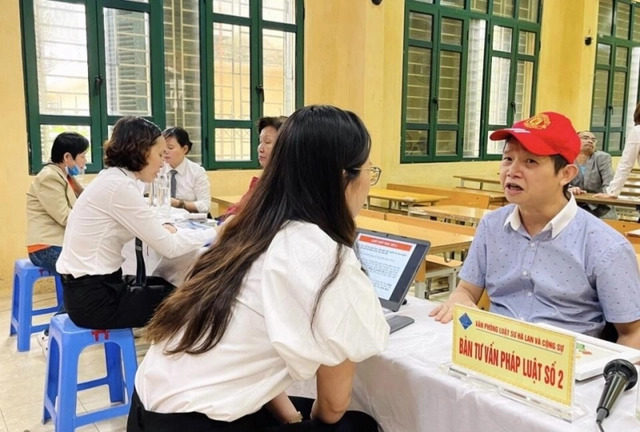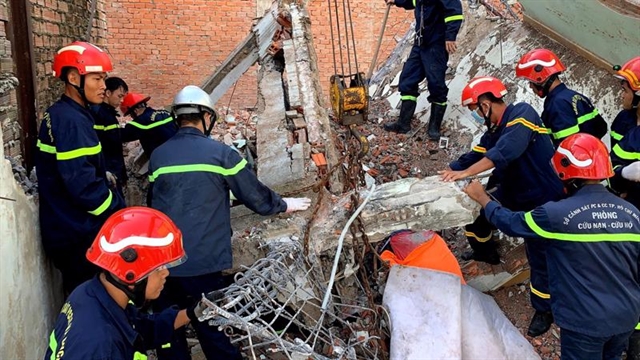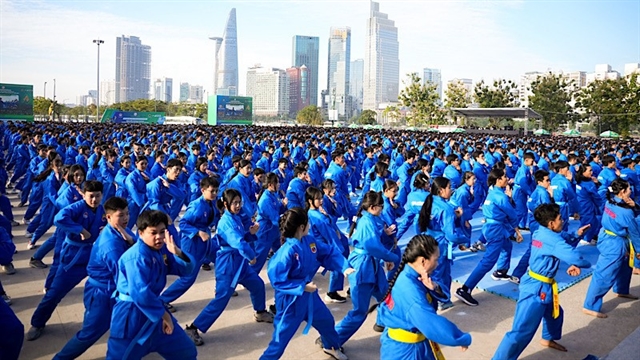 Opinion
Opinion

 |
| Workplace accidents caused losses of more than US$1.6 billion last year. — Photo vneconomy.vn |
Last year, there were 8,286 workplace accidents nationwide – 675 of them fatal – killing 727 people and causing losses of VNĐ42.5 trillion (US$1.6 billion).
Hồ Thị Kim Ngân, deputy head of Policy and Labour Relations Department of the Việt Nam General Confederation of Labour, spoke with the Voice of Vietnam about plans to enhance workplace safety this year, during the month of action on occupational safety and hygiene.
Statistics show that last year, about 8,286 cases of workplace accidents occurred across the country, an increase of 12 per cent compared to 2023. What is the cause of this?
Analysis and investigations show many reasons for workplace accidents. One of the main reasons is that, although workplace safety procedures have been issued, implementation is still subjective, and there is no systematic and complete inspection, supervision or compliance. There are many cases of shortcuts and omissions in the process.
Awareness of workplace safety is not yet as high as it should be for both businesses and workers.
Only when workplace safety becomes a priority for both employers and employees will workplace accidents be minimised.
In fact, many businesses in recent years have applied advanced technology to increase safety in the production process. How do you assess these efforts?
Reducing accidents at work not only requires dissemination of information, but also investment from businesses. Initially, investing in workplace safety and hygiene may cost a lot. However, the effects are very helpful for businesses and workers, limiting risks, especially for workers.
Accidents in the workplace not only cause suffering for employees, but also create burdens for their families and businesses.
In recent years, many firms have invested in high-tech production lines and occupational safety. However, this has only happened in large enterprises. Investment in workplace safety in small and medium-sized businesses is still quite limited.
In addition, gathering data, reporting on and investigating workplace accidents also needs to be digitised to manage incidents better. Currently, we still do not have complete statistics for workplace accidents nationwide.
In the context of global economic integration, how do workplace safety and hygiene give an advantage to businesses in the global supply chain?
When Việt Nam joins international trade agreements, three issues of concern are administration, environment and occupational safety and hygiene in production processes.
Currently, many Asian countries are considering applying laws to inspect supply chains. This means they want to ensure imported goods comply with regulations on environment, administration and safety and hygiene.
Occupational safety and hygiene have therefore become a major focus for export businesses over the past few years.
To export their goods, companies have to comply not only with Vietnamese regulations but also international standards.
In an increasingly competitive environment, Vietnamese enterprises should quickly meet international standards to give themselves an edge.
Workplace accidents can cause big losses for workers. The State has offered several policies supporting employees. Are there any shortcomings that can be solved to better ensure these benefits?
The fund for workplace accidents and illnesses has been around for years, providing financial assistance for many employees who were in accidents or were exposed to risks at work.
However, feedback from localities has shown that some people who were in accidents at work still have difficulties completing procedures and documents, especially those who work at night and those who do not have enough evidence to prove that what happened was an occupational accident. There are still many people who have not yet received benefits from policies on workplace accidents and illnesses.
Additionally, some of the compensation rates in occupational accident and disease policies are based on minimum salary rates, so benefits can be much lower than what is required to make up for workers' reduced working capacity and meet their health recovery needs.
In my opinion, workplace accident policies should provide assistance for workers returning to the labour market.
We can learn from places like South Korea, where a wide variety of contributors are expected to create funds for occupational accidents and diseases. For example, lottery companies must also contribute to the workplace accident fund for the fund to develop further.
Their policies and benefits not only focus on subsidies, but also on rehabilitation after workplace accidents and illness to help employees return to the labour market as soon as possible.
In addition, part of these funds can be used to install automatic working environment monitoring stations to help reduce costs for businesses.
Evaluation of environmental impacts and working conditions should not only be done by enterprises, but also by State authorities in order to ensure accuracy and benefits for workers, in comparison with current regulations.
What activities does the Việt Nam General Confederation of Labour have lined up for the month of action on occupational safety and hygiene, as well as to care for the lives of workers?
This year’s month of action on occupational safety and hygiene is aimed at enhancing the evaluation and identification of risks and implementing measures for workplace safety and hygiene.
The Việt Nam General Confederation of Labour actively promotes and takes action to reduce workplace accidents and occupational diseases in line with this year's theme.
Looking back at 2024, many accidents happened due to the neglect of both employers and employees. So controlling risks and proposing measures to minimise accidents are a top priority for relevant ministries and sectors.
The confederation has organised a series of events this month to deliver the message in support of workplace safety, calling on businesses and employees to participate with an aim of mobilising social resources to take care of workers.
It has also organised a creativity festival, responding to the Party’s Resolution 57 on enhancing innovation and scientific development as a key task to promote economic development.
The confederation also has programmes to strengthen inspection and supervision to prevent risks in enterprises and increase initiative for both employees and employers. — VNS

.jpg)
.jpg)

